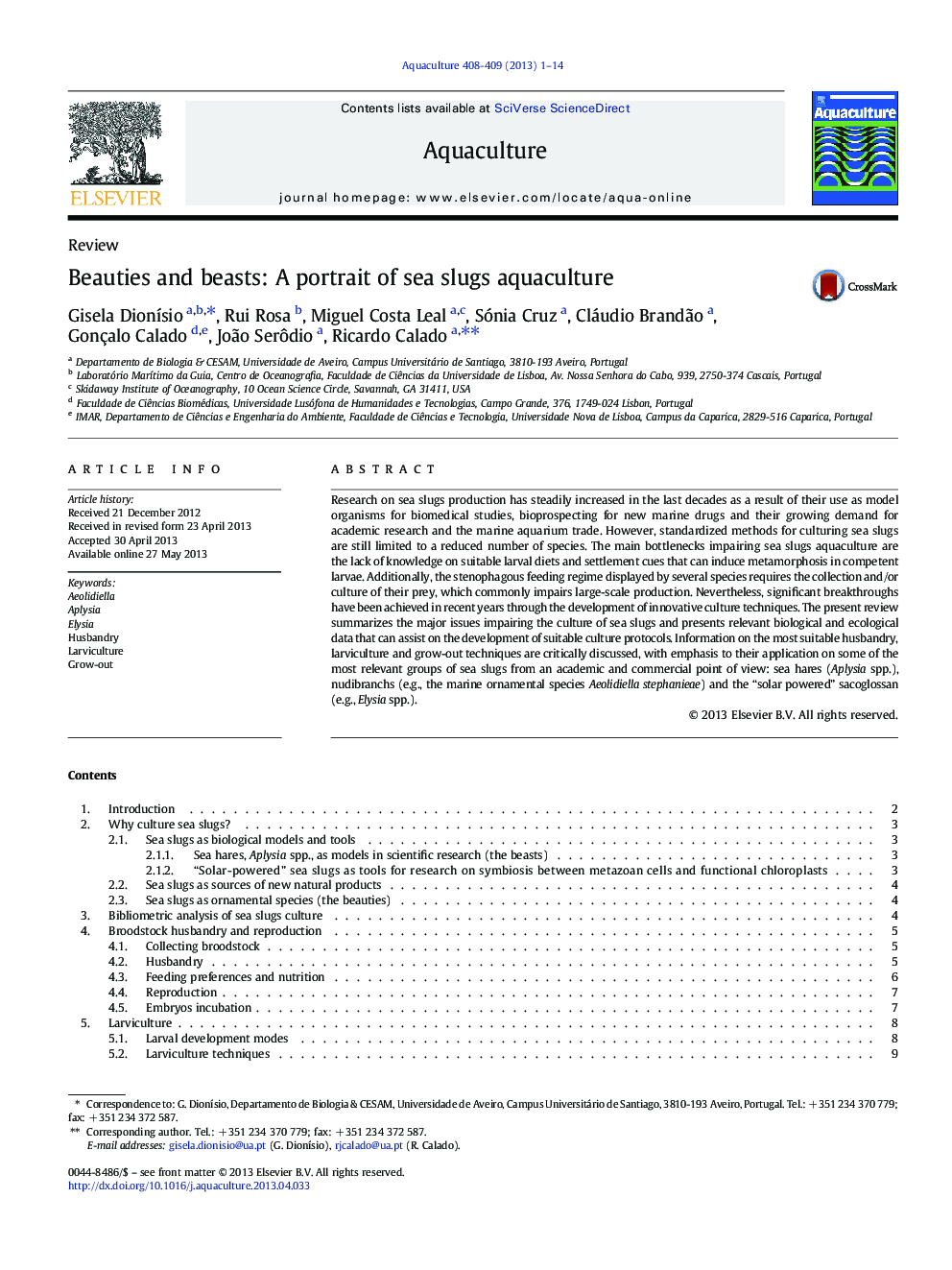| Article ID | Journal | Published Year | Pages | File Type |
|---|---|---|---|---|
| 8495564 | Aquaculture | 2013 | 14 Pages |
Abstract
Research on sea slugs production has steadily increased in the last decades as a result of their use as model organisms for biomedical studies, bioprospecting for new marine drugs and their growing demand for academic research and the marine aquarium trade. However, standardized methods for culturing sea slugs are still limited to a reduced number of species. The main bottlenecks impairing sea slugs aquaculture are the lack of knowledge on suitable larval diets and settlement cues that can induce metamorphosis in competent larvae. Additionally, the stenophagous feeding regime displayed by several species requires the collection and/or culture of their prey, which commonly impairs large-scale production. Nevertheless, significant breakthroughs have been achieved in recent years through the development of innovative culture techniques. The present review summarizes the major issues impairing the culture of sea slugs and presents relevant biological and ecological data that can assist on the development of suitable culture protocols. Information on the most suitable husbandry, larviculture and grow-out techniques are critically discussed, with emphasis to their application on some of the most relevant groups of sea slugs from an academic and commercial point of view: sea hares (Aplysia spp.), nudibranchs (e.g., the marine ornamental species Aeolidiella stephanieae) and the “solar powered” sacoglossan (e.g., Elysia spp.).
Keywords
Related Topics
Life Sciences
Agricultural and Biological Sciences
Aquatic Science
Authors
Gisela DionÃsio, Rui Rosa, Miguel Costa Leal, Sónia Cruz, Cláudio Brandão, Gonçalo Calado, João Serôdio, Ricardo Calado,
